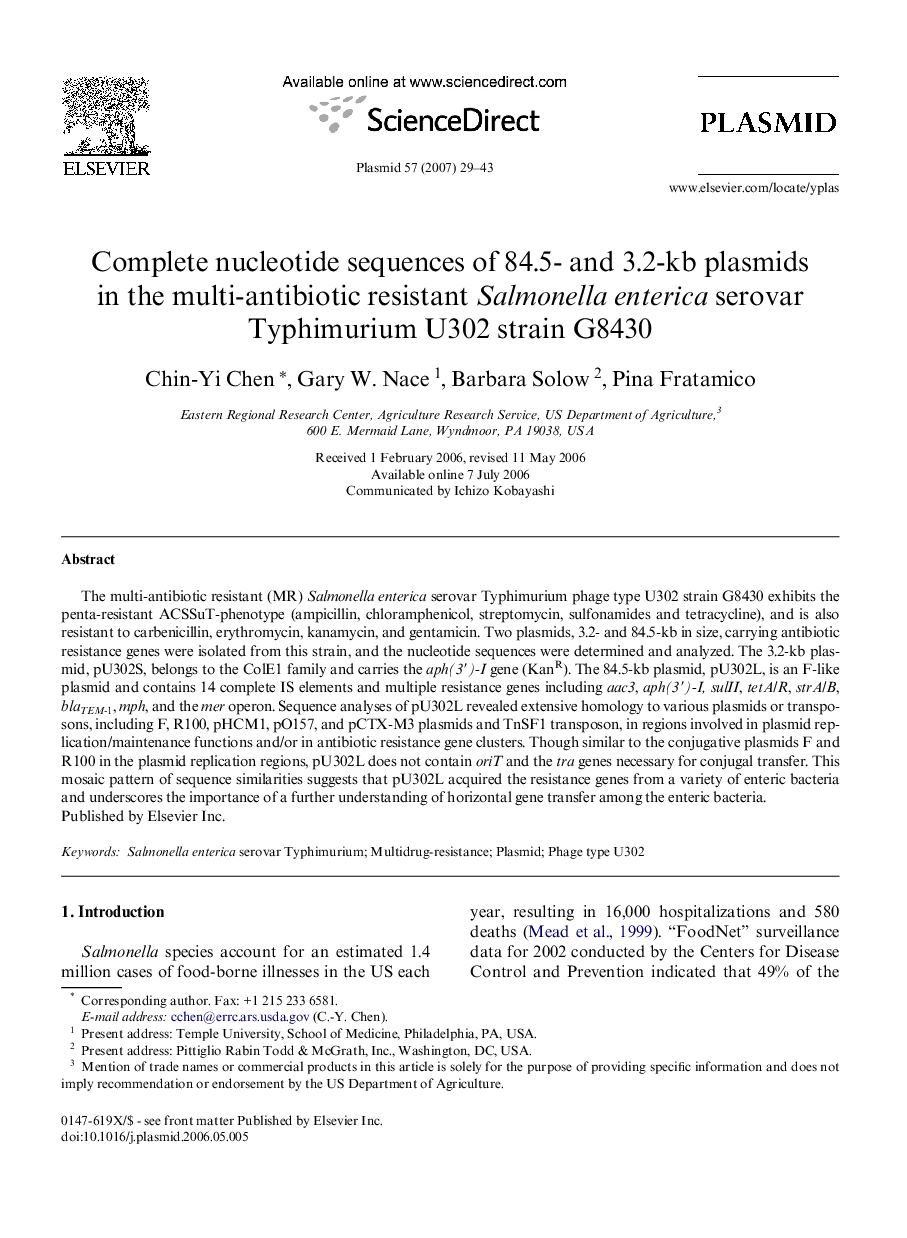| Article ID | Journal | Published Year | Pages | File Type |
|---|---|---|---|---|
| 2824495 | Plasmid | 2007 | 15 Pages |
The multi-antibiotic resistant (MR) Salmonella enterica serovar Typhimurium phage type U302 strain G8430 exhibits the penta-resistant ACSSuT-phenotype (ampicillin, chloramphenicol, streptomycin, sulfonamides and tetracycline), and is also resistant to carbenicillin, erythromycin, kanamycin, and gentamicin. Two plasmids, 3.2- and 84.5-kb in size, carrying antibiotic resistance genes were isolated from this strain, and the nucleotide sequences were determined and analyzed. The 3.2-kb plasmid, pU302S, belongs to the ColE1 family and carries the aph(3′)-I gene (KanR). The 84.5-kb plasmid, pU302L, is an F-like plasmid and contains 14 complete IS elements and multiple resistance genes including aac3, aph(3′)-I, sulII, tetA/R, strA/B, blaTEM-1, mph, and the mer operon. Sequence analyses of pU302L revealed extensive homology to various plasmids or transposons, including F, R100, pHCM1, pO157, and pCTX-M3 plasmids and TnSF1 transposon, in regions involved in plasmid replication/maintenance functions and/or in antibiotic resistance gene clusters. Though similar to the conjugative plasmids F and R100 in the plasmid replication regions, pU302L does not contain oriT and the tra genes necessary for conjugal transfer. This mosaic pattern of sequence similarities suggests that pU302L acquired the resistance genes from a variety of enteric bacteria and underscores the importance of a further understanding of horizontal gene transfer among the enteric bacteria.
